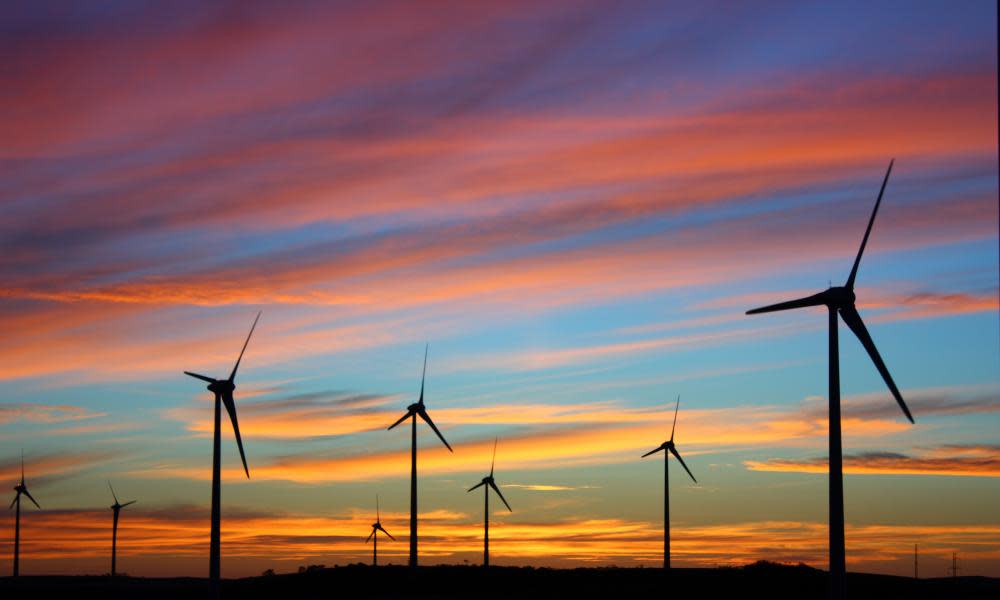Carbon policy indecision creates 'investment strike' in renewables

The uncertainty of Australia’s carbon policy is causing reduced investment, including in renewable energy, regulators have told a parliamentary committee.
Officials from the Australian Energy Market Commission told the standing committee on the environment and energy on Friday that an emissions intensity scheme was the best solution to end uncertainty because it was technology neutral and could respond to variables such as high gas prices.
The evidence echoes the warning of Australia’s chief scientist, Alan Finkel, that investment has stalled and his support for an EIS in a preliminary report before his major review of Australia’s climate policy, which he is due to complete by mid 2017.
Labor and the Greens have said the evidence shows increased power prices are not leading to investment to improve supply or manage demand because of an “investment strike” caused by government policies.
Anne Pearson, the chief executive of the AEMC, said the electricity sector was in transition and needed policy certainty for investment decisions.
“That certainty won’t come until there’s some certainty in emissions policy,” she said.
A senior director, Richard Owens, said the AEMC tried to drive investment but “we seem to be seeing there’s a lot of uncertainty for businesses”. That would last “until they know what policy on climate change will be adopted to meet 2030 and 2050 targets”.
“If you are thinking of entering the market for solar power and storage, a large-scale solar provider, or pumped hydro, or as a gas power station ... it’s very hard to know if you’ll make money [until emissions policy is decided].”
Liberal MP Craig Kelly – a conservative who has suggested if Donald Trump pulls the US out of the Paris Agreement the global emissions reduction framework will be “cactus” – suggested that investors in wind and solar already had certainty.
Pearson said: “Only up to a point – until 2020. That’s becoming increasingly uncertain as well.”
The renewable energy target, which mandates about 23.5% of Australia’s electricity come from renewables, applies until 2020 and the prime minister, Malcolm Turnbull, has said the policy was “never intended to be perpetual”, suggesting it may expire.
Despite the Finkel review being overwhelmed with submissions calling for a price on carbon or a market mechanism the Turnbull government has ruled out any carbon price, including an emissions intensity scheme.
Pearson said in its submission to the Finkel review the AEMC had “concluded an emissions intensity scheme was the best way forward” because it worked regardless of a range of variables, including high or low gas prices or high or low electricity demand.
That included measuring an EIS against goals including price, stability and system security or “keeping the lights on”.
Owens said an EIS was “technology-neutral”, and as a result it would adapt to high gas prices by encouraging investment in wind or solar instead.
The new Australian Energy Market Operator chief executive, Audrey Zibelma, said the energy market was rapidly changing due to factors including the declining cost of renewables and storage.
“All [energy] markets are facing this issue: are they designed with enough certainty to get the investment you want?”
Zibelma said to design policy the government should ask what level of fossil fuels it wants to retain in the energy mix to achieve security of energy and maintain some price stability.
The next step was to ask what the right mechanisms were to send signals to retain fossil fuel power generation where it’s needed but “so that we’re not retaining more than we need to”.
When asked if the markets should price the reliability of some power sources, Zibelma accepted that with the rise of non-synchronous power supply from renewables like wind there would be a need to price “qualities like inertia and frequency” that were provided by synchronous power generation.
Labor’s shadow assistant minister for climate change and deputy chair of the committee, Pat Conroy, said that two of the most important energy regulators had said “the main stumbling block to lowering power prices is investment uncertainty around the carbon policy”.
“We’ve had prices high for quite a while – wholesale prices have doubled under this government – but it’s not leading to increased investment and the reason is uncertainty around emissions reduction policy.”
In its evidence the Australian Energy Regulator said that in recent years on average 20% of the cost of investment in electricity infrastructure was being used to create capacity that was used only in peak periods, or 3% of the time.
Conroy warned that because regulations allowed electricity providers to directly pass the capital costs on to consumers, the investment was “zero risk” and raised prices.
The Greens climate change and energy spokesman, Adam Bandt, told Guardian Australia if 20% of the $5bn of capital costs was paying for “a handful of high use days each year” then consumers were being slugged when other solutions, like paying big electricity users to reduce demand, would be more appropriate.
Bandt said the Greens would push for a new central network planning agency because AEMO manages the existing network but did not plan extensions of the network, for example to create transmission lines from areas where high wind levels and sun brightness could be used for large-scale renewables.

 Yahoo News
Yahoo News 
